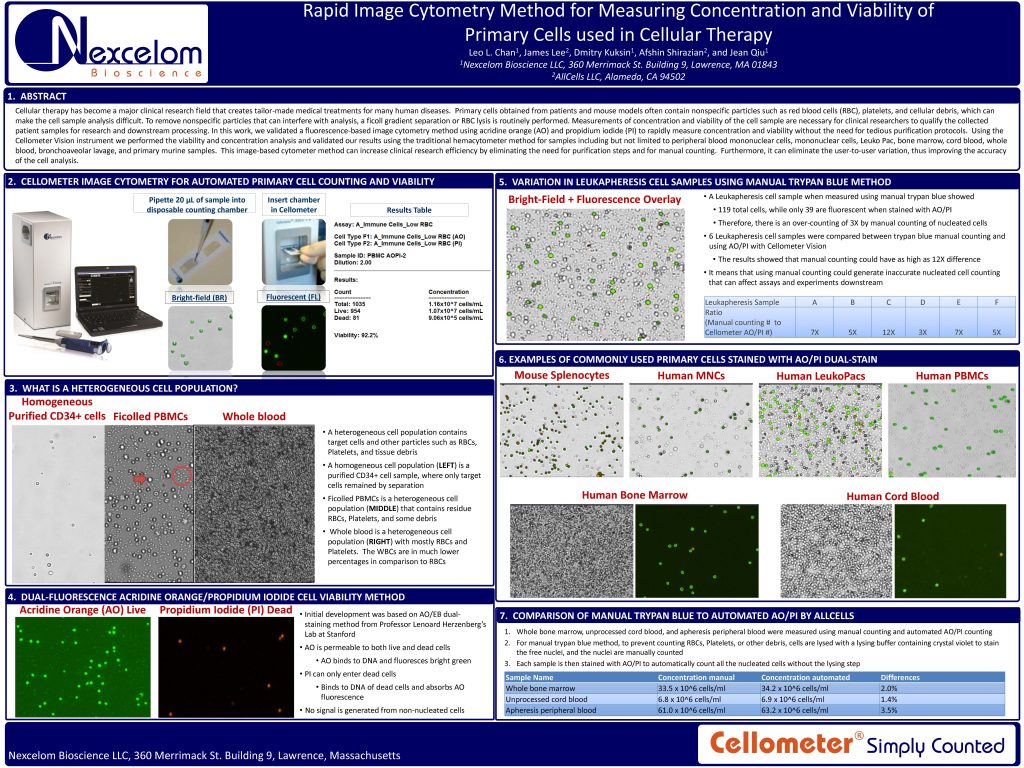Rapid Image Cytometry Method for Measuring Concentration and Viability of Primary Cells used in Cellular Therapy
Leo L. Chan, James Lee, Dmitry Kuksin, Afshin Shirazian, and Jean Qiu
Cellular therapy has become a major clinical research field that creates tailor-made medical treatments for many human diseases. Primary cells obtained from patients and mouse models often contain nonspecific particles such as red blood cells (RBC), platelets, and cellular debris, which can
make the cell sample analysis difficult. To remove nonspecific particles that can interfere with analysis, a ficoll gradient separation or RBC lysis is routinely performed. Measurements of concentration and viability of the cell sample are necessary for clinical researchers to qualify the collected
patient samples for research and downstream processing. In this work, we validated a fluorescence-based image cytometry method using acridine orange (AO) and propidium iodide (PI) to rapidly measure concentration and viability without the need for tedious purification protocols. Using the
Cellometer Vision instrument we performed the viability and concentration analysis and validated our results using the traditional hemacytometer method for samples including but not limited to peripheral blood mononuclear cells, mononuclear cells, Leuko Pac, bone marrow, cord blood, whole blood, bronchoaveolar lavage, and primary murine samples. This image-based cytometer method can increase clinical research efficiency by eliminating the need for purification steps and for manual counting. Furthermore, it can eliminate the user-to-user variation, thus improving the accuracy of the cell analysis.

